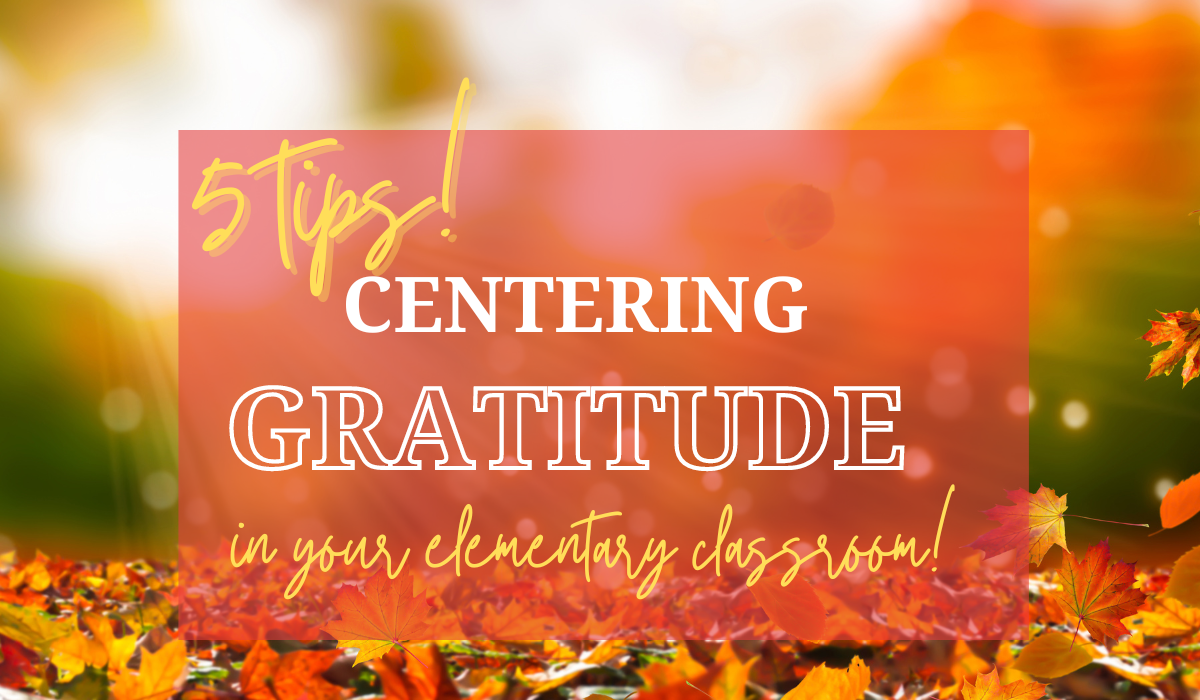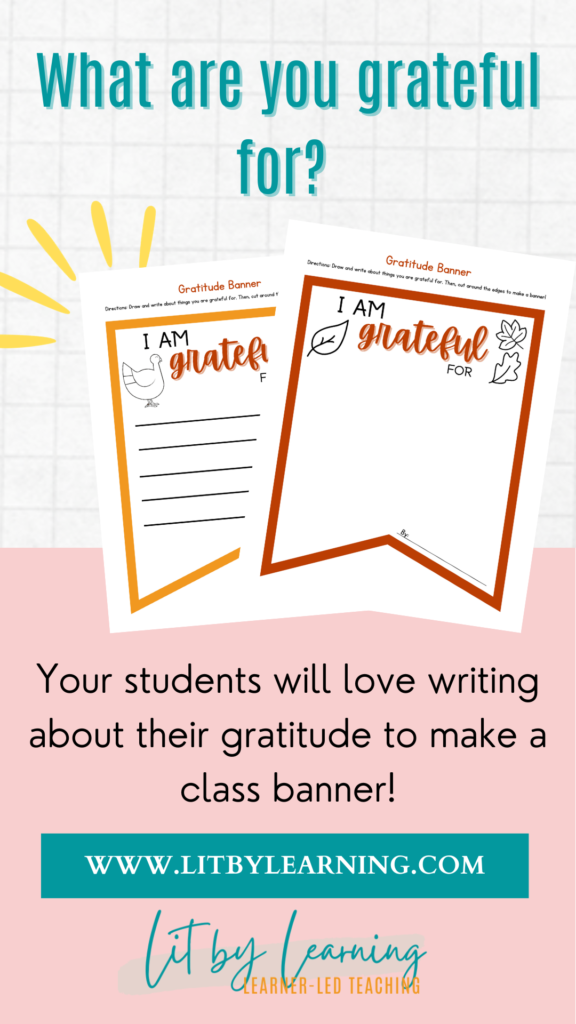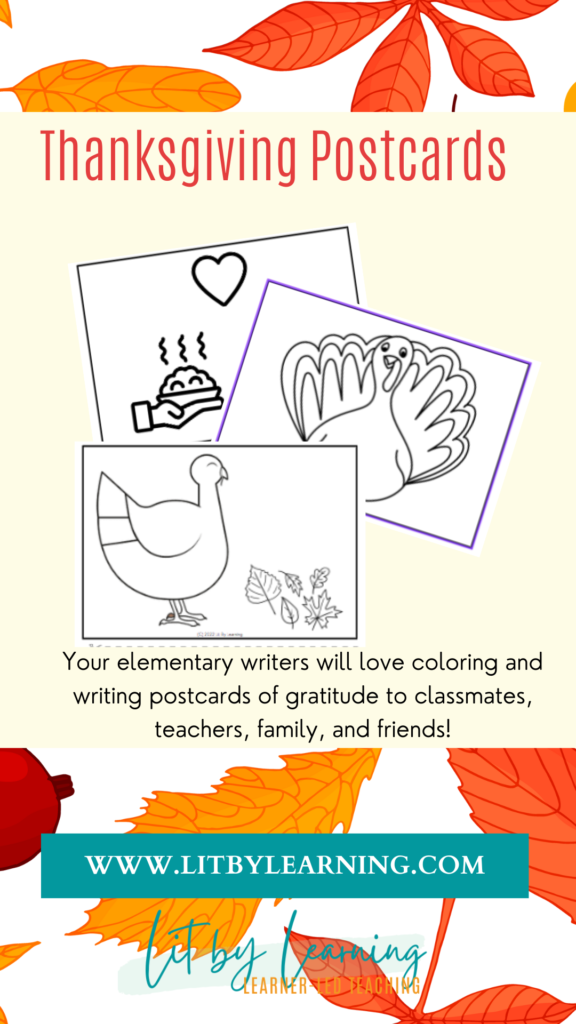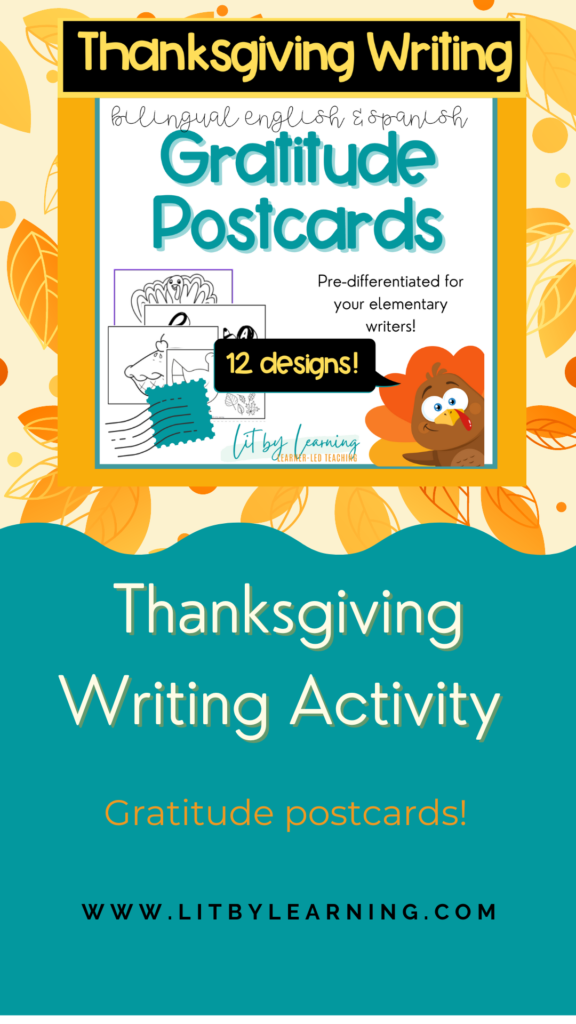Elementary teachers, November marks the perfect time for teaching gratitude in the classroom! But… how? Read on for ideas about how to center thankfulness in your elementary classroom!
Why gratitude?
Gratitude is a powerful emotion that has the potential to transform both our lives and the lives of our elementary students. Teaching children the art of gratitude not only helps them appreciate the world around them but also promotes a positive and nurturing classroom environment.
Whether you’re teaching gratitude to pre-schoolers or to a more seasoned 3rd grade crew, these five tips will help you center gratitude in your classrooms, fostering a sense of thankfulness, empathy, and emotional well-being among their young learners.
Teaching gratitude is an essential lesson that goes beyond the textbooks and prepares our children to be more compassionate, appreciative, and resilient individuals.
Teaching Gratitude Tip 1: Daily Gratitude Journal
One of the most beautiful simple yet effective ways to introduce gratitude to your elementary classroom is to implement a daily gratitude journal. Set aside a few minutes each day for students to reflect on and write down things they are thankful for. You can provide journals or encourage students to create their own!
For some classroom settings, a collaborative gratitude journal may work best. This could take the form of a gratitude calendar: students come up with one thing they’re thankful for for each day and write it on the classwide calendar. A collaborative gratitude journal could also take the form of a gratitude tree or a thankful turkey. In each of these ideas, students work together to write what they’re grateful for on leaves or feathers, adding them to create a group project.
This simple daily practice helps students recognize the positive aspects of their lives and develops a habit of acknowledging and appreciating the little things that often go unnoticed.
Teaching Gratitude in the Classroom Tip 2: Thank-You Notes
Teaching children the power of expressing gratitude through thank-you notes can be a second heartwarming and meaningful experience. Encourage your students to write thank-you notes to family members, friends, or even classmates who have done something special for them. Not only will students learn to express gratitude, but they’ll be sharing their spirit of thankfulness in a way that will delight others.
Tip 3: Gratitude Circles
Gratitude circles are another great way to promote gratitude and connection within your classroom. At the beginning or end of each day, gather your students in a circle, and encourage each one to share something they are grateful for. This can be a personal experience, an act of kindness they witnessed, or something as simple as a delicious treat at lunch.
Conduct the circle as you would any other talking circle. Provide students with a meaningful talking piece to pass around and remind students to take turns speaking and listening. Encourage active listening practices by modeling turning to face the speaker and using nonverbal gestures like agree symbols to show reactions.
Consider centering the conversation on a read-aloud (see ideas below!) or on a quote about gratitude. Invite students to share their perspectives on what the material means and how it can be relevant in their own lives.
By participating in gratitude circles, students learn to listen and empathize with their peers, realizing that everyone has their own unique reasons to be grateful. This practice builds a sense of community and belonging in your classroom.
“I am happy because I’m grateful. I choose to be grateful. That gratitude allows me to be happy.”
Will Arnett
Tip 4: Gratitude-Themed Art Projects
As elementary teachers know well, art is a wonderful medium for children to express their emotions and creativity. As our fourth idea, incorporate gratitude into your art curriculum by having students create gratitude-themed art projects. Provide them with art supplies and encourage them to draw, paint, or craft something that represents what they are thankful for.
These projects not only provide an outlet for self-expression but also help students visualize their gratitude in a tangible way. You can even organize a mini-gallery within your classroom to display their creations, allowing students to showcase their work and share their reasons for gratitude with their peers.
Tip 5: Gratitude Read-Alouds
A powerful read-aloud is one of the best ways to center the idea of gratitude in your elementary classroom. Each November, I read “We Are Thankful: Otsaliheliga,” written by Traci Sorell and illustrated by Frane Lessac. This beautiful book tells of how the Cherokee people show gratitude throughout the year by repeating “Otsaliheliga:” “We are grateful.” It’s the perfect way to kickstart an inquiry into gratitude – and to celebrate November’s Indigenous Peoples’ Month!
For other great read-alouds that center gratitude, make sure to check out my other post!
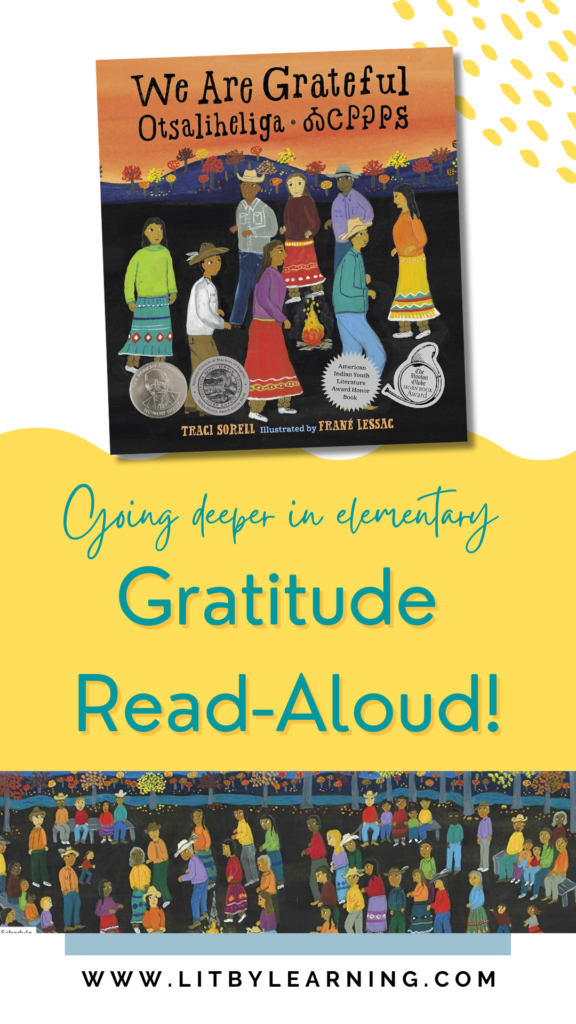
How will you teach gratitude in your classroom?
Centering gratitude in your elementary classroom is a valuable investment in the emotional well-being and personal growth of your students. By implementing these five strategies, you can foster a sense of thankfulness, empathy, and positivity that will not only benefit your students during their time in your class, but also throughout their lives.
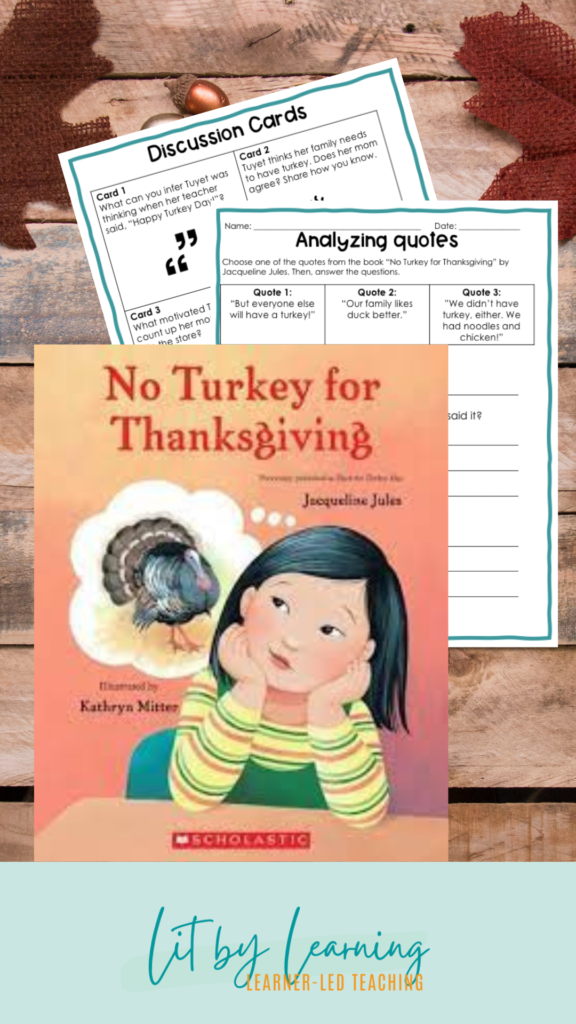
Read more from Lit By Learning!
- How do I celebrate holidays in my Anti-Bias Classroom?: Tackle this tricky question with the help of educational anti-bias experts!
- Your New Favorite Diverse Classroom Read-Aloud: Read about how “Our Favorite Days of the Year” by A.E Ali can be the ideal launching point for discussing holidays in your elementary classroom!

